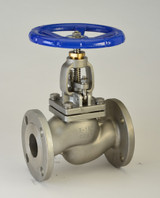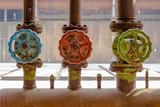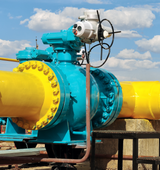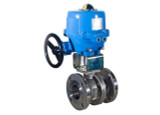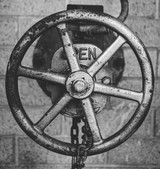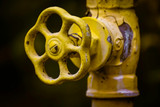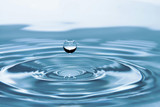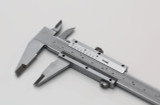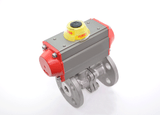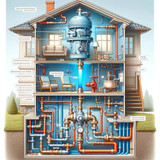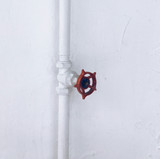The electric ball valve, or motorized ball valve, is an essential part of many different industries. It allows users to regulate the flow of liquids and gases at will. The guide below will equip you with useful information for your electric ball valve purchase.
What Is an Electric Ball Valve?
An electric ball valve, also known as a motorized ball valve, is a special type of mechanism that uses an electric actuator to open or close a ball valve. When required, you can turn the sytem on or off by applying electricity, without access to the internal workings of the system.
How Does an Electric Ball Valve Work?
As the name suggests, an electric ball valve consists largely of a ball. However, the ball has a bore drilled through its center. When a motorized ball valve is opened, the bore aligns with the rest of the pipe, allowing gases or liquids to pass through.
When the valves are closed, the unperforated side of the ball faces the pipe, blocking liquids and gases from passing through. Each electric ball valve contains an electronic actuator that provides the motion for the ball and determines whether the valve is open or closed.
What Are the Common Applications of Electric Ball Valves?
The electric ball valve is used in a wide array of different applications and industries. Some of the most common would include the following:
- Water and wastewater management
- AC and HVAC systems
- Process control systems
- Oil and gas pipelines
- Chemical processing
- Agriculture and irrigation
- Fire protection systems
These are just a few of the many ways in which an electric ball valve is used within industry or society as a whole. Some of these are essential, and others may seem insignificant. However, in every instance, the electric ball valve helps simplify and expedite the process involved.
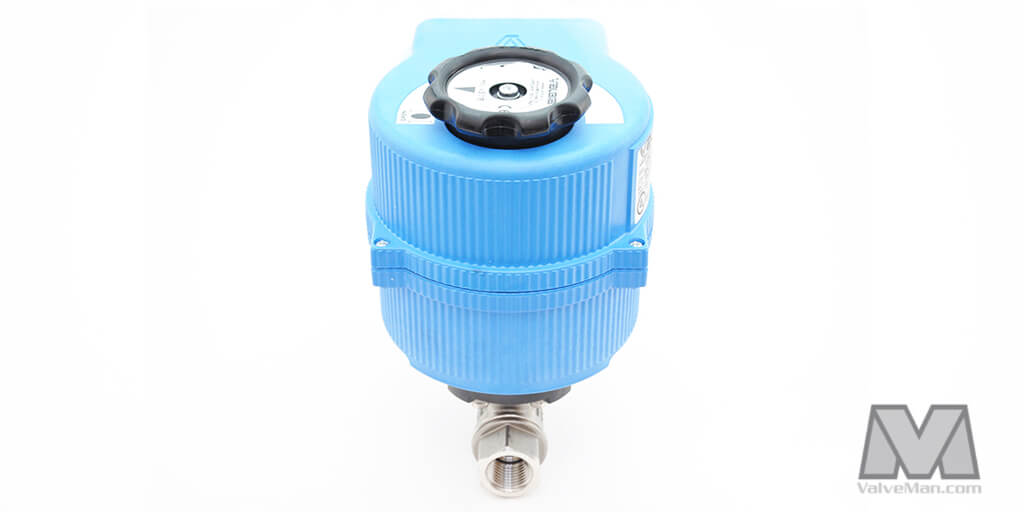
Types of Motorized Ball Valves
The difference in each type of motorized ball valve reflects variances in applications, often dictated by port configurations. For example, Bonomi offers electrically actuated ball valves with several port choices, including "Full," "T," and "L" designs. Full (and/or reduced) refers to bore diameter, while T and L refer to bore/port shapes. Each port design serves a specific function, making it ideal for particular applications:
- Bonomi 8E064 - This brass bodied 2-way, electrically actuated ball valve features a full port. The advantage of a full port--the hole through the ball--is that this bore is the same internal diameter as the rest of the valve. This means the flow of fluid is not restricted in any way as it travels through the valve (when fully open, and the bore is in-line with the pipe). There is no reduction in fluid movement, and no loss in pressure. A full port electric ball valve is perfect for an application in which mixed fluids must travel through a valve: the absence of restrictions aids in the prevention of fluid separation (and unnecessary build-up within the valve).
- Bonomi 8E065 - A 3-way valve, this electric ball valve--featuring a brass body and chrome-plated ball--utilizes a reduced bore, "T" port. Ideal for applications where pressure is not a concern, but function is, a T port valve is perfect for controlling fluid travel in two lines. It also offers the luxury of stopping feed to one line, while allowing flow to the other, or neither.
- Bonomi 8E066 - Constructed of lead-free brass, this 3-way electric ball valve features an "L" port. L ports differ from T ports in that they can only feed fluid to one line or another. However, this ability is extremely useful in applications that require the addition of more than one fluid into a mix. Combinations that need to be introduced in measured succession can be controlled easily with an L port valve.
These represent three common motorized ball valve configurations, and this trio projects Bonomi perfection. Bonomi is a trusted name, and world leader, in electrically actuated ball valves, as the company has been in business and family owned for seven generations. A top choice for the perfect electrically actuated ball valve.
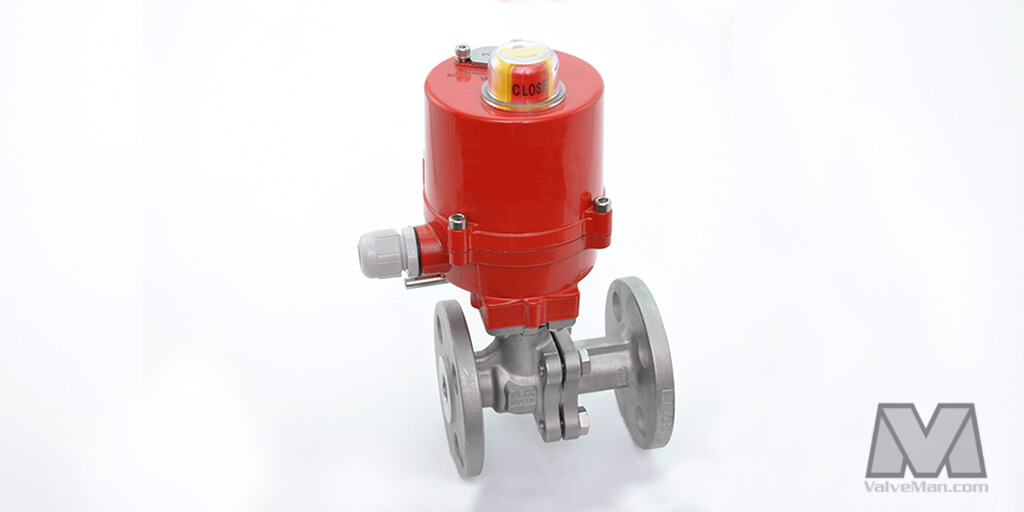
Electric Ball Valve Materials and Sizes
Like many other valves, an electric ball valve can come in a wide array of shapes, sizes, and materials. Different types of systems may require different materials and sizes. Common electric ball valve body materials include:
Because there are so many different applications for an electric ball valve, there are various sizes on the market. Common electric ball valve sizes include:
Depending on the industry and application where you're planning on using the valve, the size and materials may differ significantly. It's critical that you know which materials and sizes are suitable for your purpose before you buy a valve.
What Are the Advantages of Using an Electric Ball Valve?
There are various advantages and benefits of using an electric ball valve. To mention just a few,
- They give you precise control over the flow rate of liquids and gases. Thanks to the precision adjustment that goes with a motorized ball valve, you can regulate process parameters to minute degrees.
- They have rapid response times, which means you can switch the valves on and off nearly instantly.
- You can automate valves or activate and deactivate them via remote control. This remote integration allows you to control various parts of the system from a single central location.
- They're incredibly versatile. You can use an electric ball valve for various media, including liquids, gases, and slurries.
- They're highly energy efficient. Because they require so little energy to work, these valves can make a huge difference in the amount of power used.
Frequently Asked Questions (FAQs)
Are Electric Ball Valves Suitable for Both On/Off and Throttling Applications?
Yes, electric ball valves are suitable for both types of applications. They can be used as standard on-and-off valves by opening or closing the valve all the way. They can also be used to throttle flow by opening or closing them only a part of the way.
How Do I Select the Right Electric Ball Valve for My Application?
There are various things you need to bear in mind when you're trying to decide upon an appropriate motorized ball valve for your application. Some of the most significant include the following:
- The material being transported
- The desired size
- The flow pressure of the system
- The temperature range of the materials being transported
- Flow characteristics
- Power supply requirements
- Industry and use-specific requirements
Where Can I Buy an Electric Ball Valves?
ValveMan offers a broad range of different motorized and electric ball valves. For the best offers and prices, take a closer look at our vast collection of motorized ball valves. From PVC to stainless steel, one-inch to eight-inch, we have something that will match your requirements.
If you need extra information along the way, feel free to contact us, and we'll be happy to give you whatever assistance and quotations you might need.
What is an actuator?
An actuator is a device that uses an energy source such as electricity, air, or hydraulics to move or control a mechanism. In ball valves, actuators automatically open or close the valve without manual effort.
Can you combine an electric ball valve and electric actuator?
Yes. In fact, an electric ball valve is simply a ball valve paired with an electric actuator. The actuator mounts to the valve and provides powered rotation of the ball, enabling automated flow control.
How do you install the electric ball valve?
Installation involves mounting the electric actuator onto the ball valve, securing it with the appropriate brackets or ISO flanges, wiring the actuator to the power source or control system, and then connecting the valve into the pipeline. Always follow the manufacturer’s wiring diagram and torque specifications.
What causes failure in an electric ball valve?
Common causes include electrical issues (such as power surges or faulty wiring), actuator wear, water ingress or poor sealing, and debris in the pipeline that stresses the ball or seats. Regular maintenance and proper installation greatly reduce failure risks.
When is an electric actuated ball valve necessary?
They’re necessary when remote operation, automation, or precise flow control is required. Typical applications include HVAC systems, water treatment, industrial processes, and any system where manual operation would be impractical or inefficient.
Electric Ball Valve - Related Articles
-320°F Cryogenic Liquid Nitrogen Valve - Buy Valves from ValveMan
What is a Duty Cycle and How Does it Relate to Electric Ball Valves?
Practical Guide To Electric and Pneumatic Actuators – Which One To Choose?
Using an Actuated Ball Valve Or a Solenoid Valve For Best Fluid Control In The System
The Future of Electric Flow Actuation
Difference Between a Vented Ball Valve and a Standard Ball Valve
Our Posts
View AllWhy Fall is the Perfect Time for Valve Maintenance (And What Happens If You Wait)
We're well into fall now, which means it's time for that conversation nobody wants to have: winter p …
Read MoreFrom the DMZ to Bonomi: Rick Wentzel’s Valve Legacy
In the inaugural episode of the Fully Open podcast, host Gil Welsford sits down with Rick Wentzel of …
Read More
Check Valve vs Backflow Preventer Comparison | ValveMan
If you need to make sure that fluid in your pipe system flows in one direction only, and prevent rev …
Read MoreDifferent Types of Gas Shut Off Valves | ValveMan
Whether you're upgrading your residential gas system, looking for the best gas shut off valve for yo …
Read MoreGlobe Valve vs Ball Valve Comparison Guide | ValveMan
Valves are widely used in industrial and manufacturing facilities, but they’re also used in utilitie …
Read MoreNEMA Ratings Explained | ValveMan
Have you ever wondered what that little NEMA number on your electric actuator meant? Or perhaps, you …
Read MoreGate Valve vs Ball Valve Comparison Guide | ValveMan
Valves are widely used in industrial and manufacturing facilities, but they’re also used in utilitie …
Read MoreValve Inspection - Main Points of Valve Inspection and Testing in Manufacturing Settings
Industrial facilities rely on different types of valves (such as gate valves, check valves and ball …
Read MoreCan Ball Valves Be Used For Flow Control?
Ball valves are widely used in plumbing and piping systems, in fact, they are one of the most common …
Read MoreIntroducing Bonomi Valves
The Bonomi Group is a leader in industrial sectors including oil and gas, hydraulics, heating and en …
Read MoreUnderstanding Valve Actuators: Manual, Electric, Pneumatic and Hydraulic
Are you a beginner new to the valve world, ready to learn more about the various types of valve actu …
Read More3 Check Valve Mistakes to Avoid
So, you’re looking for a check valve, but you’re not sure if there’s any pitfalls to look out for? O …
Read MoreTypes of Valves in Plumbing
Have you ever wondered what goes into managing the flow of water in your home, or through a building …
Read MoreIntroducing Apollo Valves
Apollo Valves® inventory includes a wide range of valve products supplied to diverse markets. These …
Read MoreTypes of Water Valves
We all know that valves play a crucial role in regulating the flow of liquids and gasses in a broad …
Read MoreUnderstanding Valve Sizes and Measurement
Sizing the appropriate valve is critical to ensuring the performance of your system. Whether you'r …
Read MoreBall Valve Types and Applications
Ball valves are important components in a vast range of systems, from small family-owned workshops t …
Read MoreWhat is a Backflow Preventer, and How Does it Work?
When a simple check valve is inadequate for the job, you need a backflow preventer. But knowing you …
Read MoreUnderstanding valve standards and specifications
Hey there, fellow valve enthusiasts! Today, we're looking at valve codes, standards and specifica …
Read MoreHow to Tell if a Valve is On or Off
We’ve all been there —staring at a valve, almost certain you know whether it’s open or closed, but …
Read More
 888-825-8800
888-825-8800










